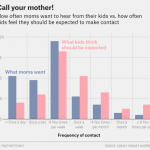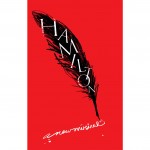While we’ve discussing the virtues of counterfactual history, I ran across this interesting argument about real history from Wired arguing that U-boats in WWI marked the beginning of unrestricted warfare, starting us down the path that would lead to the firebombing of Dresden and the use of drones today:
The Brits, worried about losing hugely expensive battleships to U-boats, kept their big guns near home. They formed an effective blockade of German ports using smaller vessels, stopping vital supplies from reaching shore. Desperate to strike back, Germany turned its U-boats on the unarmed civilian merchant ships keeping Britain fed and armed with supplies provided by the United States.
That shift in strategy signified a significant shift in modern warfare. Noncombatants have always died in war, says Dr. Jan S. Breemer, a submarine warfare expert and professor of national security affairs at the US Naval War College in Monterey, California. But Germany made a deliberate choice to to sink civilian vessels without warning. This would be echoed in World War II, when there was less concern for the risk of collateral damage during wholesale bombing of European cities.
Meanwhile, back in the realm of the purely fictional, Christian H. is discussing what he could learn from Arkans — fabled, two-headed children of Cain (who remind me of pre-split people from Aristophanes’s speech in Plato’s Symposium). Christian knows exactly which problem he’d like to use these people to probe:
I suspect that Arkan culture must contain some wisdom that helps in conflict resolution and living despite disagreement. (I’m thinking of Wade Davis’s suggestion in The Wayfinders that different cultures contain, or even simply are, techniques for addressing different challenges or questions; I discussed that when I wrote about the Majesty 2: Monster Kingdom game.) In real life, there’s been some interest in how conjoined twins resolve their differences; Alice Dormurat Dreger’s One of Us: Conjoined Twins and the Future of Normal deals with this somewhat, but also see the video interviews with Abby Hensel and Brittney Hensel, who freely admit to arguing fairly often. But conjoined twins don’t have a tradition. There’s little sense that they can learn from conjoined twins before them, since conjoined twins rarely even meet anyone else like them, let alone have a chance to learn from them. Each pair must produce their own conflict resolution techniques on their own. The Arkans, though, would have a whole culture which would address this problem. I’ve written before that living with disagreement is a concern of mine, and even used conjoined twins as a brief example; living with disagreement must be done, but I’m still not entirely sure how.
And, from the annals of history that’s stranger than fiction, io9 shares a story from The Disappearing Spoon: And Other True Tales of Madness, Love, and the History of the World from the Periodic Table of the Elements about a faux-alchemist who seems to have lived out part of the Rumpelstiltskin story. Boasting about his powers to transmute gold attracted the attentions of a king, who imprisoned him and demanded he make good on his claims. And then…
Böttger was allowed various experimental apparati, but none of them stood up to the heat of his desperate attempts to make gold, so he shifted the focus of his experiment to try to make heat-proof clay. This helped him find his way to Ehrenfried Walter von Tschirnhaus, who also worked for the king. Between the two of them, they came up with a harder, finer clay, that was scratch-proof while still being delicate. They came up with porcelain. Porcelain was, in many ways, more important than gold. Gold could be found anywhere, but porcelain came only from China. It was a sign of prestige, and Europeans (and soon, colonials) were desperate to get their hands on it.
Böttger and Tschirnhaus managed, at last, to work out that porcelain was produced by blending a white clay, called kaolin, and a specific type of feldspar. They figured out how hot the furnace used to produce porcelain had to be, and they managed to discover the right way to glaze the porcelain pots. After seven years, Böttger handed something worth its weight in gold to the king and won (a limited amount of) freedom.
Christian may not be lucky enough to run into Arkans, but a group of linguists think that they’ve found what was before a merely hypothetical structure for language.
Languages, like human bodies, come in a variety of shapes—but only to a point. Just as people don’t sprout multiple heads, languages tend to veer away from certain forms that might spring from an imaginative mind. For example, one core property of human languages is known as duality of patterning: meaningful linguistic units (such as words) break down into smaller meaningless units (sounds), so that the words sap, pass, and asp involve different combinations of the same sounds, even though their meanings are completely unrelated.
It’s not hard to imagine that things could have been otherwise. In principle, we could have a language in which sounds relate holistically to their meanings—a high-pitched yowl might mean “finger,” a guttural purr might mean “dark,” a yodel might mean “broccoli,” and so on. But there are stark advantages to duality of patterning. Try inventing a lexicon of tens of thousands of distinct noises, all of which are easily distinguished, and you will probably find yourself wishing you could simply re-use a few snippets of sound in varying arrangements.
As noted by Elizabeth Svoboda in the current issue of Nautilus, the dominant thinking until fairly recently was that universal linguistic properties reflect genetic predispositions. Under this view, duality of patterning is much like an opposable thumb: It evolved within our species because it was advantageous, and now exists as part of our genetic heritage. We are born expecting language to have duality of patterning.
What to make, then, of the recent discovery of a language whose words are not made from smaller, meaningless units? Al-Sayyid Bedouin Sign Language (ABSL) is a new sign language emerging in a village with high rates of inherited deafness in Israel’s Negev Desert. According to a report led by Wendy Sandler of the University of Haifa, words in this language correspond to holistic gestures, much like the imaginary sound-based language described above, even though ABSL has a sizable vocabulary.
I’ll admit I’m totally confused by this article, probably because I’m missing some of the nuances, but it feels like American Sign Language sometimes hits the criteria described. I think the reason it doesn’t is because each sign is decomposed into a number of elements (handshape, hand position, motion, etc), but I’m not sure why the hypothetical yowl/purr/yodel couldn’t technically be decomposed too (timbre, pitch, etc?).
In my ASL class this summer, we mostly learned words holistically, not by assembling them as you would a word from letters. (With the exception of classifiers). But this just might be due to style of instruction rather than form of language.
Computer scientists are meanwhile also studying language, but, this time, they’re interested in the nuances of handwriting, not grammar or meaning. Marketers are trying to get better at creating fake handwriting in hopes of keeping you from noticing which parts of your mail can safely be thrown out unopened. I liked the profile of their work, especially as I hadn’t been aware of most of the markers of “real” handwriting before:
When humans write by hand, we use irregular force, often pushing down too hard on the pen. This produces a “clear center”: If you consider each stroke as a road of ink, the middle of the road — the center of the strip — is occasionally somewhat transparent and devoid of ink. The pen has smooshed the ink out to the left and right sides of the pathway. In this example, the clear center is particularly visible in the “t” of “Maillift.”
Robots don’t do this. “With a machine-written letter it’s very consistent and very even,” Jurek says. “The pen is down or the pen is up, but it’s never really in between.”
I ran into another fun machine learning story this week, when I found out that Google Street View’s facial recognition algorithm has been making it blur the features of religious statues, as below:
Not much progress on the costume this week, but my LilyPad accelerometers did arrive this week, and I hope to start working on wiring them in October. For now, I’m still trying to finish the fabric components of the costume. The bodice is done (but for closures and notions), so I’ve been working on the skirt segments.
Luckily, Hello Tailor, the costume blogger, has been much more interesting than I have this week, and has put together another of her fascinating character and costume analyses for the Marvel Universe movies. This time her focus is on Nick Fury and Natasha:
Nick Fury’s badass black outfits make him into a visually iconic figure, even within the movie itself. This has the effect of a kind of reverse disguise because as soon as Nick Fury takes off his signature costume, it’s very easy for him to disappear. When people are expecting a big, imposing figure in a sweeping black coat and eyepatch, they’re not going to be looking for an elderly man in a hoodie and sunglasses. I absolutely loved this costume changeover at the end, not just because of the way it utilizes Samuel L. Jackson’s age but because of the link it provides with Black Widow.
I’m not overly familiar with Black Widow comics, but my impression is that she’s often portrayed as a rather vampy character. Her most famous visual characteristics are her vibrant red hair and shiny black catsuit, which is generally drawn to be sexier than the version we see in the movies. I’m happy with the MCU’s interpretation of her appearance, partly because it allowed me to develop a pet theory about her hair.
The movies obviously had to keep Back Widow’s red hair, but instead of going for a natural shade like Pepper Potts, they went for a bright red tone that could only come from a bottle. That’s where my comparison with Nick Fury comes in. I think that Black Widow purposefully dyes her hair such a noticeable shade because it then becomes her defining feature. The result? As soon as she changes her hair colour to something else, she can easily slip under the radar. Another reverse disguise, just like Nick Fury’s carefully constructed image as a leather-wearing badass.
For more Quick Takes, visit Conversion Diary!


















